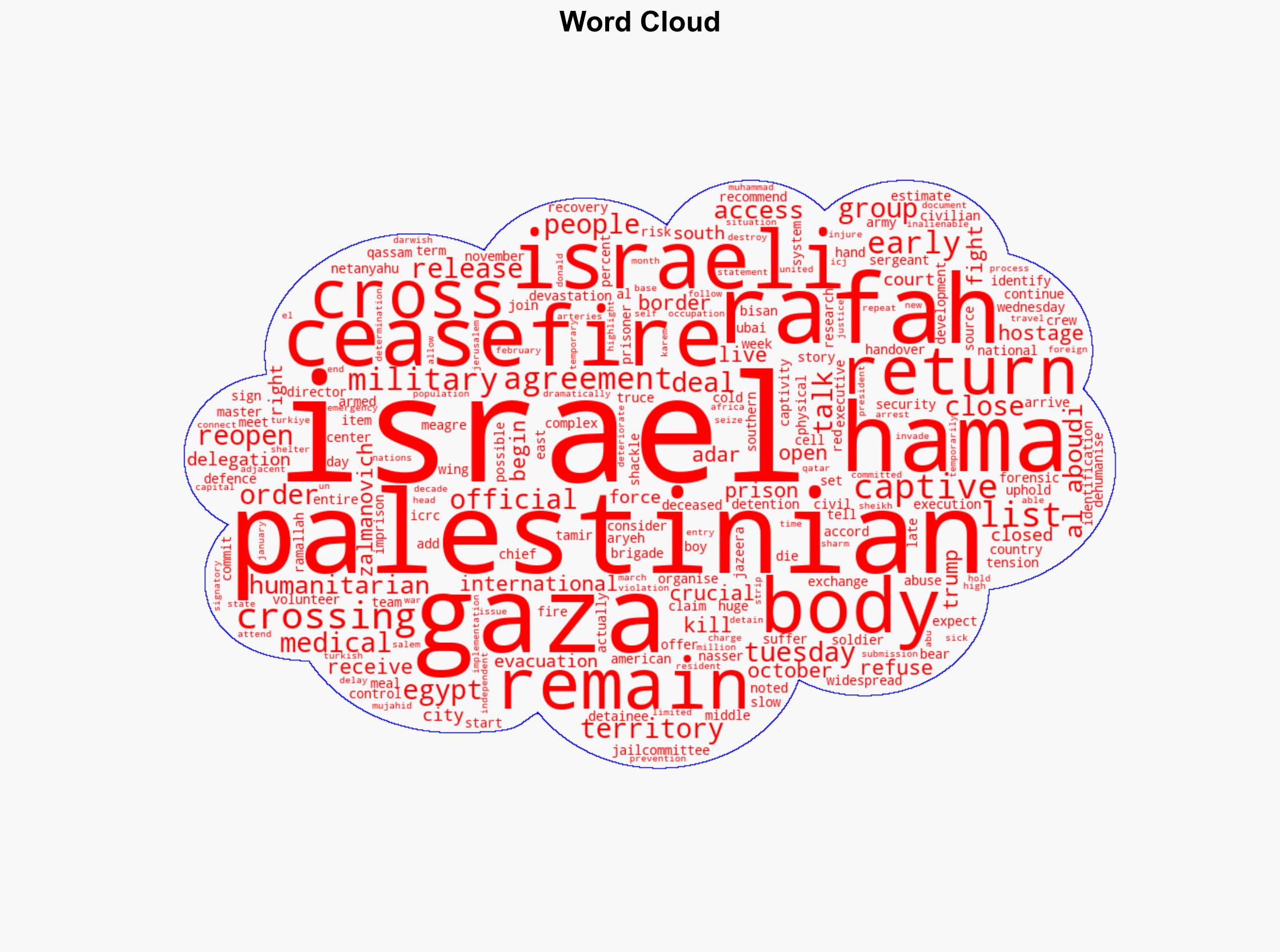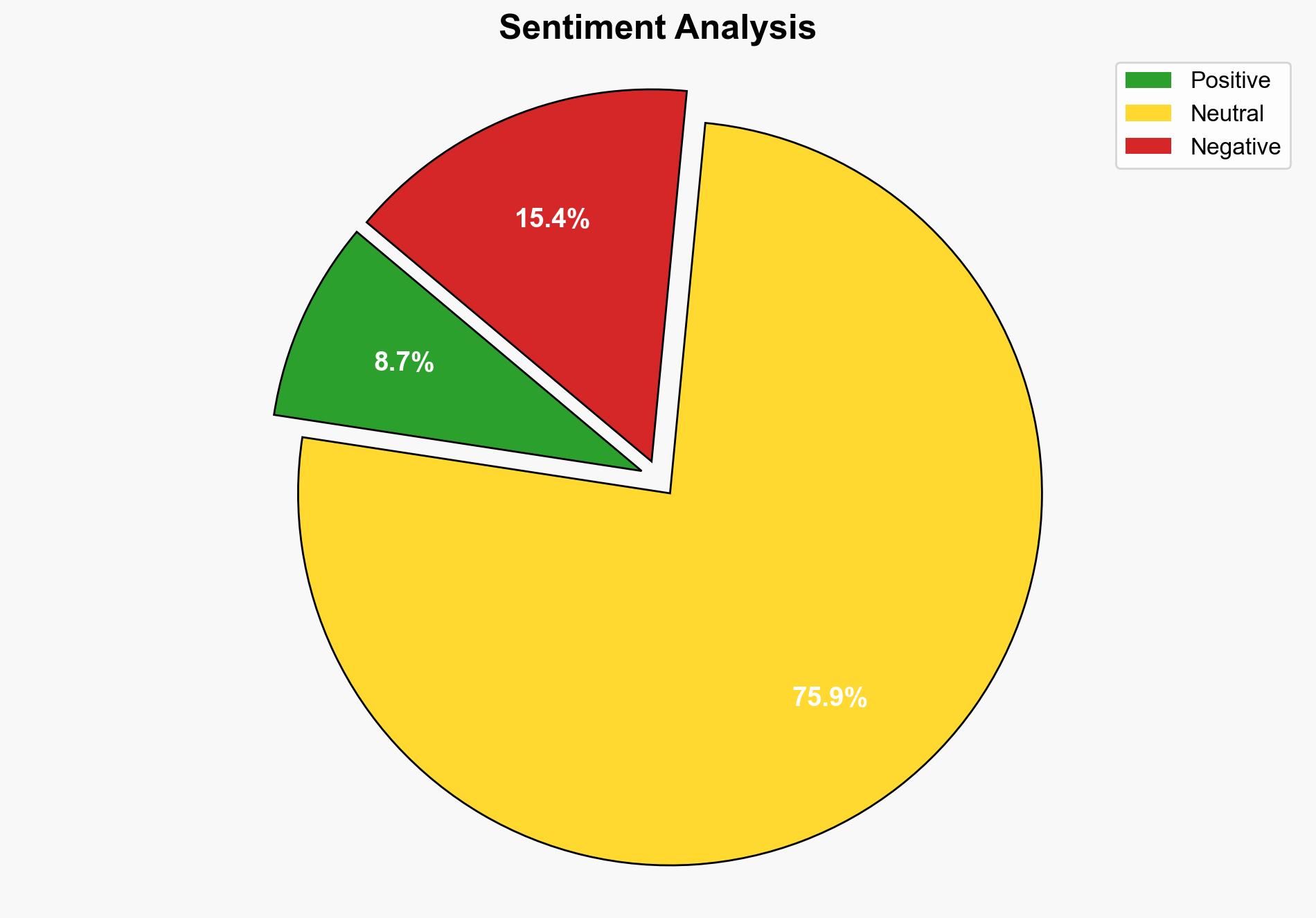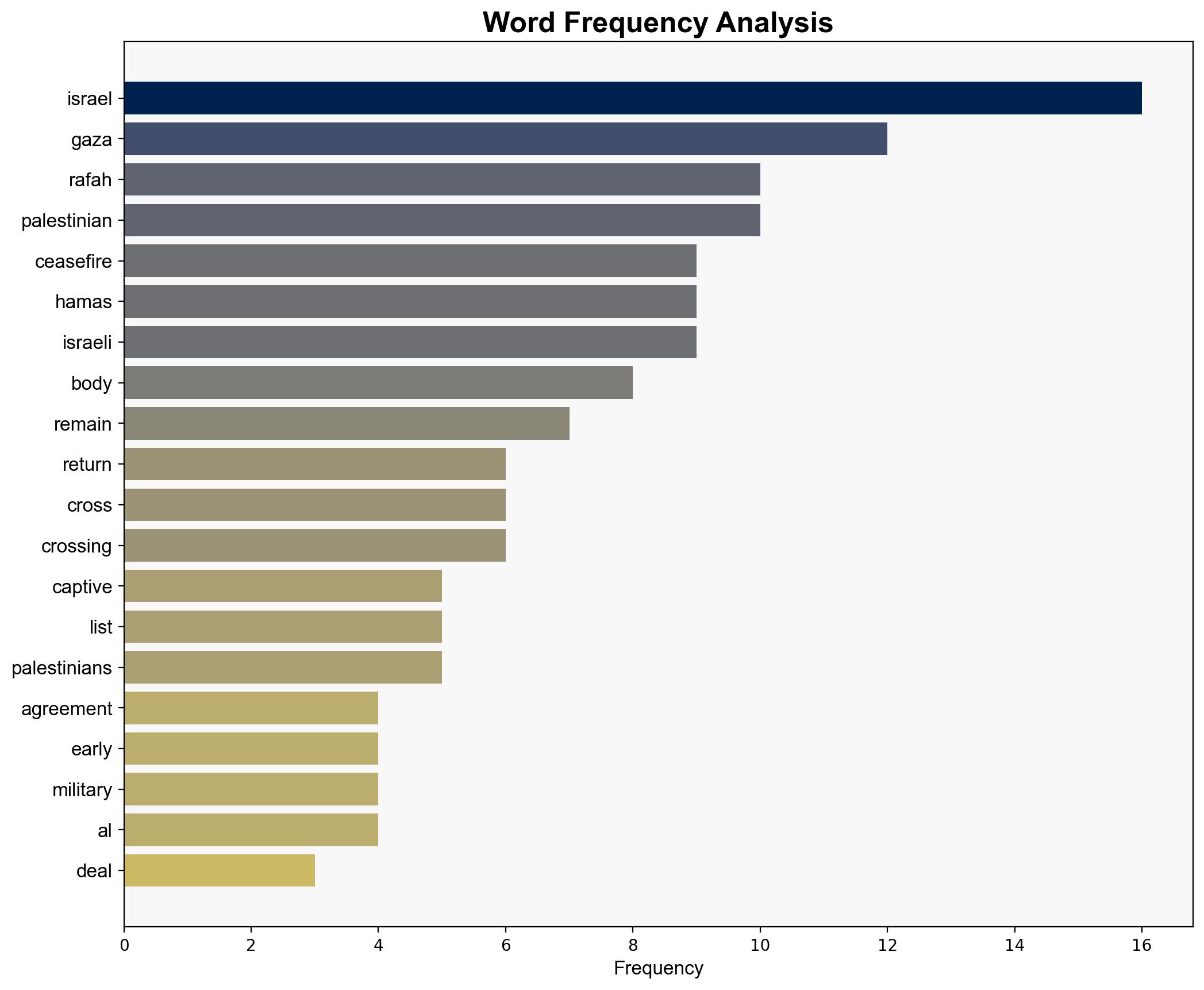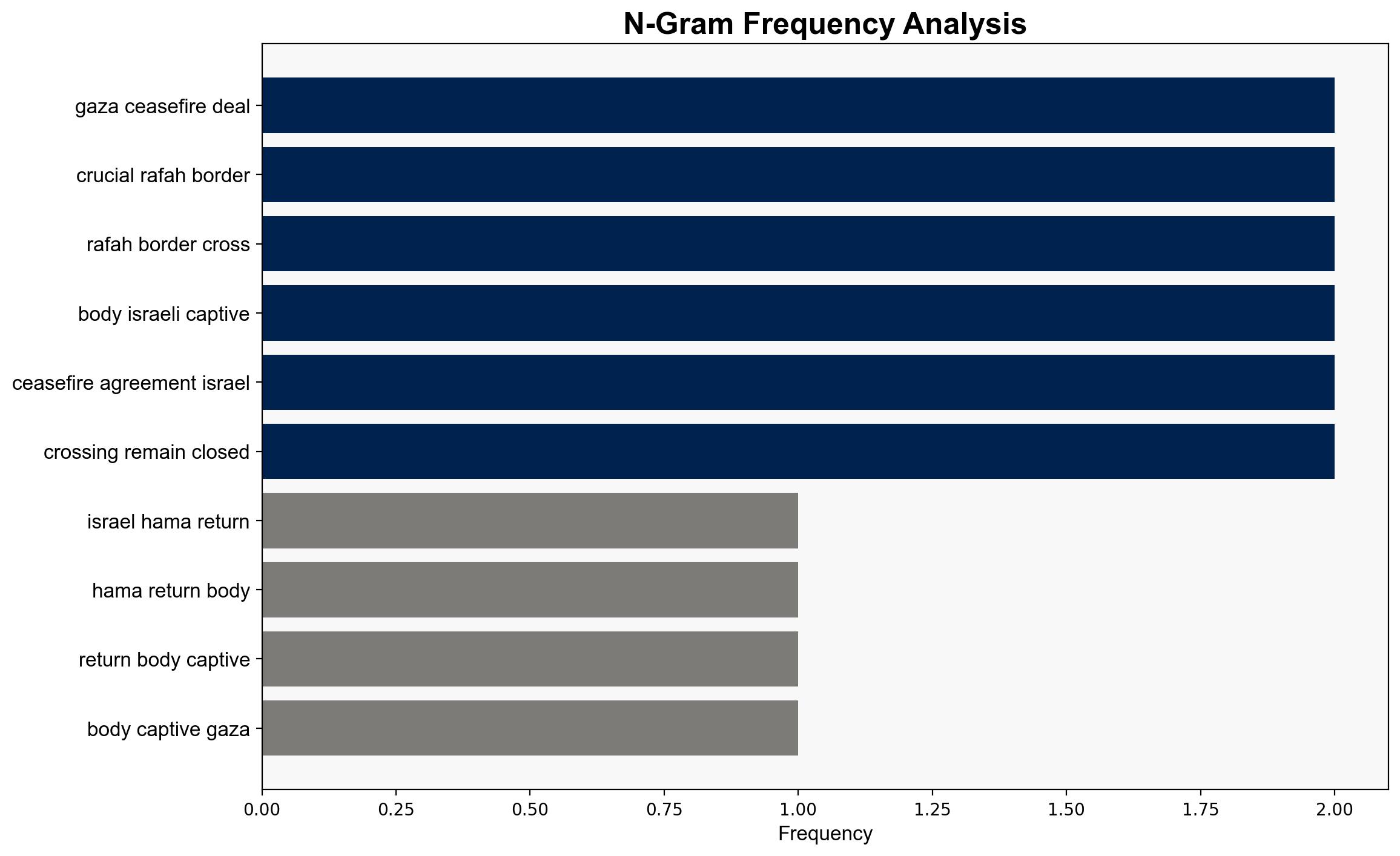Israel Hamas return more bodies of captives under Gaza ceasefire deal – Al Jazeera English
Published on: 2025-10-22
Intelligence Report: Israel Hamas return more bodies of captives under Gaza ceasefire deal – Al Jazeera English
1. BLUF (Bottom Line Up Front)
The most supported hypothesis is that the ceasefire agreement between Israel and Hamas is fragile and at risk of collapse due to mutual distrust and non-compliance with terms, particularly concerning the Rafah border crossing. Confidence level: Moderate. Recommended action is to facilitate third-party mediation to ensure adherence to the ceasefire terms and prevent escalation.
2. Competing Hypotheses
Hypothesis 1: The ceasefire agreement is primarily a tactical pause by both parties to regroup and strengthen their positions, with no genuine commitment to long-term peace.
– Structured Analysis: Using ACH 2.0, evidence such as the refusal to open the Rafah crossing and continued military control by Israel supports this hypothesis.
Hypothesis 2: The ceasefire agreement represents a genuine effort by both parties to de-escalate tensions and move towards a more stable peace process.
– Structured Analysis: The return of bodies and release of detainees could indicate a willingness to adhere to the agreement, suggesting a potential for de-escalation.
Hypothesis 1 is better supported due to the ongoing violations and lack of trust, as evidenced by the refusal to open the Rafah crossing and continued military presence.
3. Key Assumptions and Red Flags
Assumptions:
– Both parties are acting in good faith to uphold the ceasefire terms.
– The Rafah crossing is a critical component of the ceasefire agreement.
Red Flags:
– Israel’s refusal to open the Rafah crossing despite the agreement.
– Reports of physical abuse and possible execution of returned detainees, indicating potential violations of human rights.
– Statements from Hamas officials highlighting repeated violations by Israel.
4. Implications and Strategic Risks
– Potential for renewed hostilities if the ceasefire terms are not fully implemented.
– Humanitarian risks due to restricted access through the Rafah crossing, affecting medical and humanitarian aid.
– Geopolitical tensions could escalate, involving regional actors such as Egypt and Turkey.
– Psychological impact on both populations, potentially fueling further animosity and radicalization.
5. Recommendations and Outlook
- Engage international mediators to ensure compliance with ceasefire terms, focusing on reopening the Rafah crossing.
- Monitor human rights conditions of detainees and advocate for transparent investigations into alleged abuses.
- Scenario Projections:
- Best: Full compliance with ceasefire terms leads to a sustainable peace process.
- Worst: Breakdown of ceasefire results in renewed conflict and regional destabilization.
- Most Likely: Continued fragile ceasefire with sporadic violations and limited progress.
6. Key Individuals and Entities
Aryeh Zalmanovich, Tamir Adar, Ubai al Aboudi, Mujahid Muhammad Darwish.
7. Thematic Tags
national security threats, regional focus, humanitarian issues, geopolitical tensions





